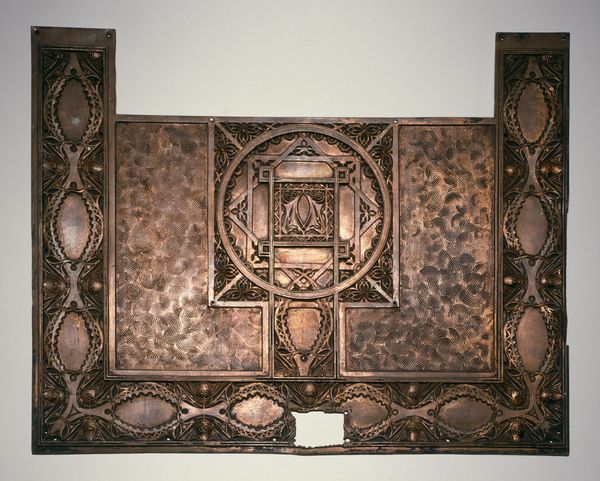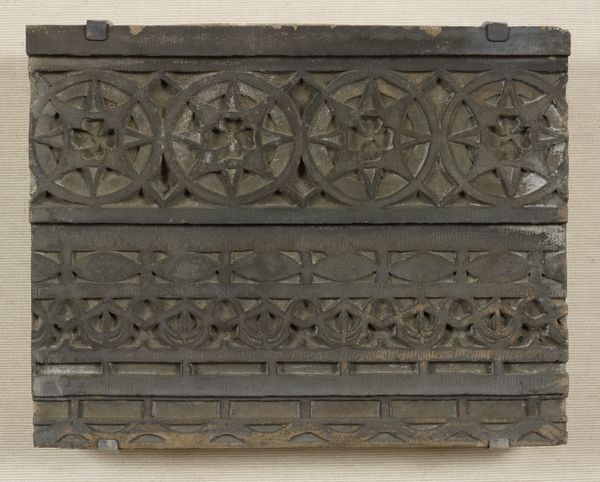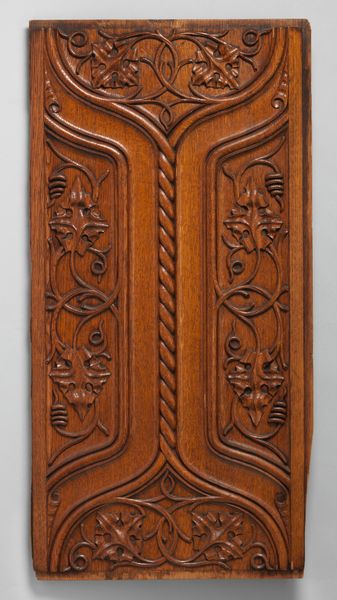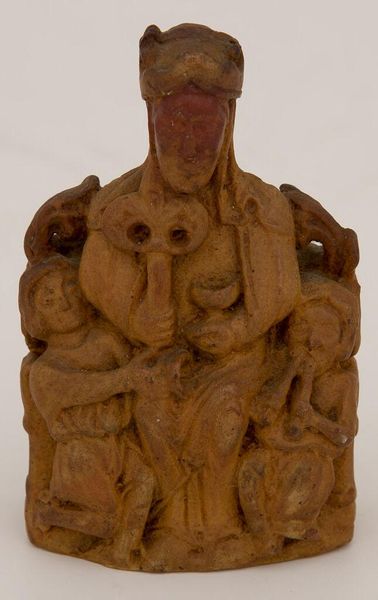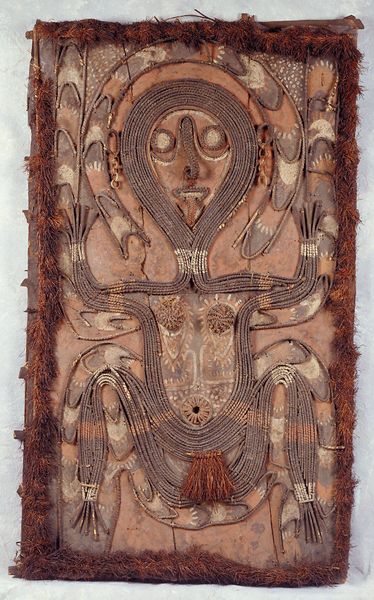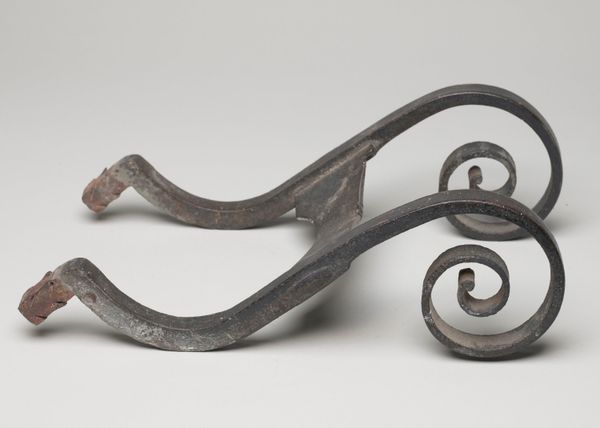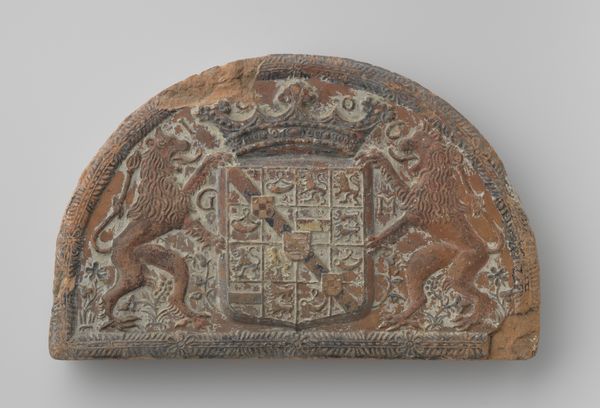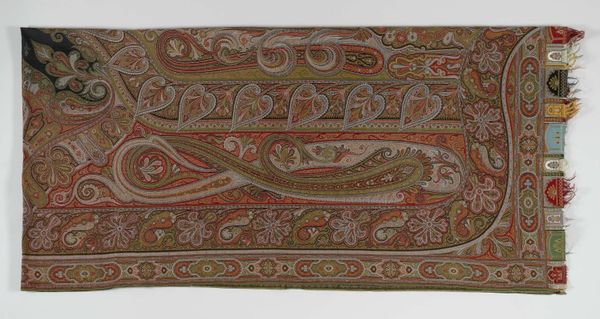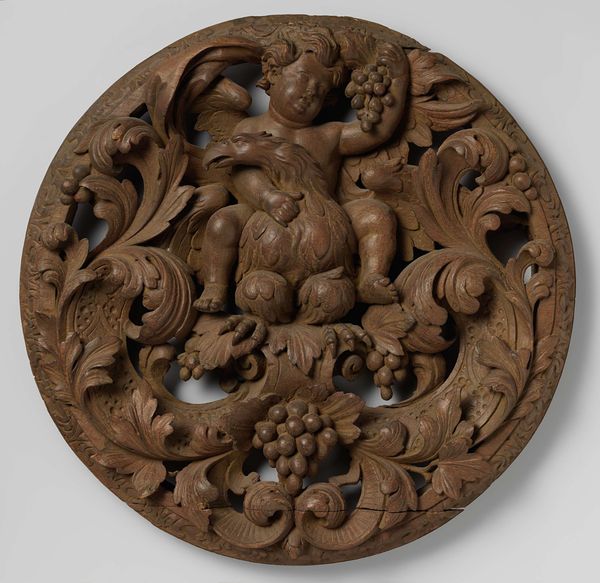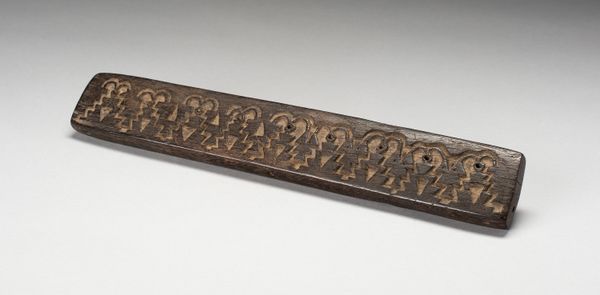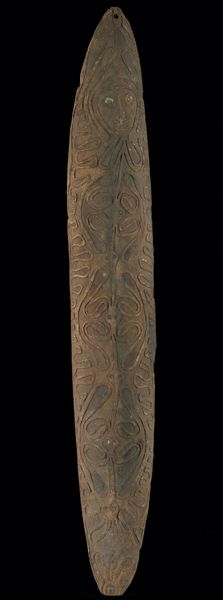
Fragment of an architectural molding Marinid dynasty (1244–1465), 14th century
0:00
0:00
carving, relief, wood
#
organic
#
carving
#
asian-art
#
relief
#
geometric pattern
#
organic pattern
#
geometric
#
plant
#
wood
#
islamic-art
#
decorative-art
Dimensions: 20.3 × 119.9 × 6.3 cm (8 × 47 1/8 × 2 7/16 in.)
Copyright: Public Domain
Curator: We're standing before a "Fragment of an Architectural Molding," dating back to the Marinid dynasty, specifically the 14th century. Editor: My first thought is, wow, the intricacy is stunning. It almost seems weightless, despite clearly being carved from wood. There’s a meditative quality to it. Curator: Absolutely. It’s a beautiful example of the Marinid dynasty’s woodworking prowess. Notice the complex layering of organic patterns, a delicate dance between geometry and nature rendered in relief. This piece comes to us from the Art Institute of Chicago. It’s fascinating how a fragment can still convey so much about the larger structure it once adorned. Editor: I’m drawn to the ways these interwoven vegetal motifs symbolize paradise, or perhaps idealized notions of growth and abundance within Islamic art and architecture. The repetition almost feels like a visual mantra, a constant echo of the divine. Curator: Good point. It is important to note that such highly skilled labor and quality material speak volumes about the patron’s resources and priorities. The carving process itself, transforming a raw material into a symbol of refined taste, is a cultural commentary in itself. How it fitted into its building matters too: its original spatial and social function and how craftspeople might have been involved in design choices. Editor: It’s interesting to consider the original context—what narratives these repeating patterns supported within the larger architectural space, and how this carving contributed to that overall symbolic language. It bridges a gap between human creation and the infinite. Curator: Agreed. Seeing the tool marks, even faint ones, gives us a trace of the original artisan. They transformed what was originally a very tactile substance – wood – into a decorative or emblematic object with geometric flourishes that can make the naturalistic qualities of the wood a feature rather than a bug. Editor: Knowing that, it adds a layer of appreciation for the patience and skill required to execute something like this. It brings me back to the universality of our attempts to imprint meaning on our surroundings through symbol. Curator: For me, it emphasizes how the artistic intention is never truly separate from the available resources and means of production of the society that made the object, and of what those production capabilities imply for their societal beliefs and structures. Editor: I now look at it differently—the organic becoming architectural, the temporal becoming transcendent, the part becoming symbolic of a whole. Thank you. Curator: Yes, seeing this object from both perspectives underscores not only its historical value, but what art is, a nexus point between social value and individual craftmanship.
Comments
No comments
Be the first to comment and join the conversation on the ultimate creative platform.


